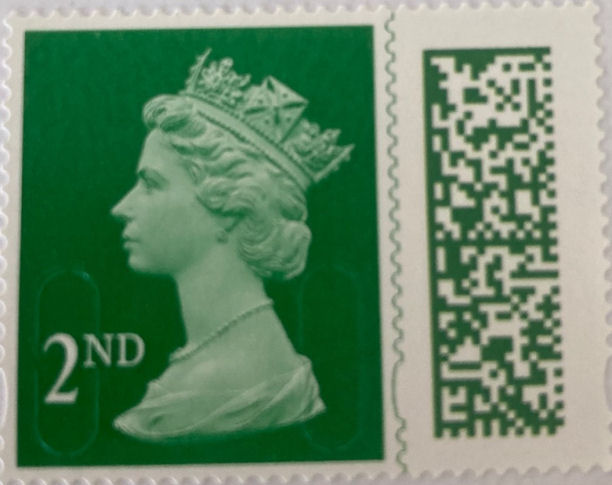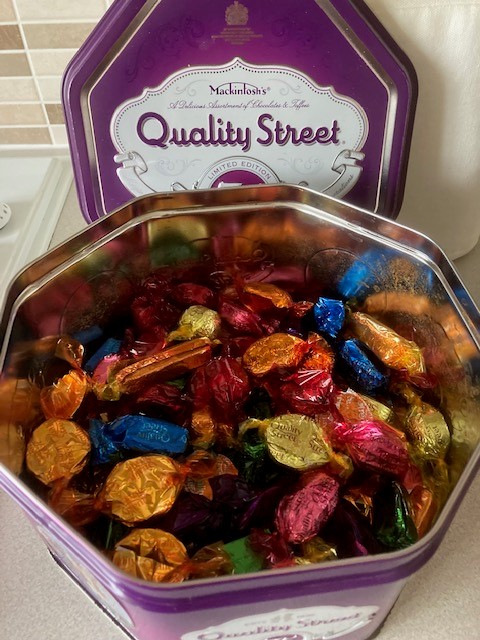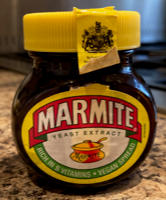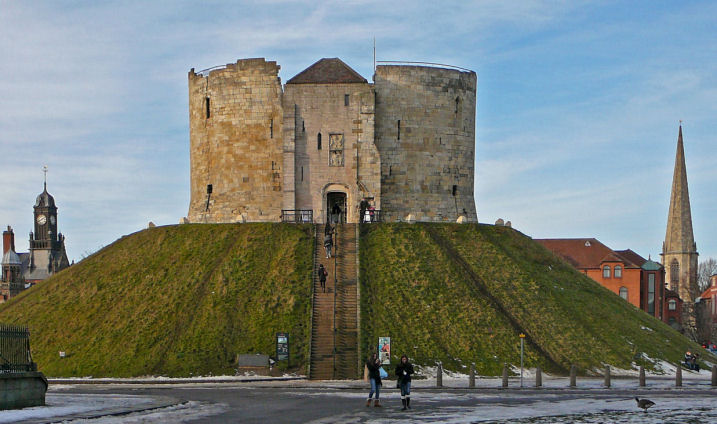Dates for your Diary
Fri 18th Nov 10.30am – AGM
Sat 3rd Dec 10-6pm - Winterfest/Christmas Fayre
Museum opening times
The Museum is open to the public, free of charge:
Thursday* to Saturday 10am – 1pm
October 100 Club
This month’s prize numbers were drawn by members Margaret Dyer & Susan Davies and the lucky winners are:-
No. 10 Grace Bearcroft £20
No. 19 Huw Bearcroft £10
If you would like to join our 100 club and be in with a chance of winning, it costs just £1 a month. Ask at the museum for further details.
The Met Concert

Congratulations to The Met for their portrayal of local talent, young and old, to mark the occasion of their 130th anniversary. To check out other performances on offer at this theatre, use this link
Winterfest/Christmas Fayre
Saturday 3rd December 10am – 6pm
The museum will be open from 10am as usual though Winterfest officially starts at 2pm. Any donations of tins, bottles, chocolate bars, toiletries, bric-a-brac, toys, handicrafts, raffle prizes and items for our Christmas hamper, would be very gratefully received! Please bring to the museum at your earliest convenience and if anyone can spare a few hours to help man stalls we will be eternally grateful!
Digital Stamps
 Royal Mail are replacing their stamps with new digital versions. The old versions can still be used until 31st January 2023 but after this date any old stamps will need to be exchanged for the new versions with the closing date for ‘swaps’ being 31st March 2023. The exchange will involve posting your stamps back to ‘FREEPOST SWAP OUT’ (no stamp required) together with a completed form available from Royal Mail, so the easiest option is to use them if you can by 31st January. One exception to this is the Christmas design stamps which have an extended period of grace.
Royal Mail are replacing their stamps with new digital versions. The old versions can still be used until 31st January 2023 but after this date any old stamps will need to be exchanged for the new versions with the closing date for ‘swaps’ being 31st March 2023. The exchange will involve posting your stamps back to ‘FREEPOST SWAP OUT’ (no stamp required) together with a completed form available from Royal Mail, so the easiest option is to use them if you can by 31st January. One exception to this is the Christmas design stamps which have an extended period of grace.
ELVIS
 Porthcawl has been hosting an annual Elvis Festival since 2004 and boy is it popular. You may well have seen photographs of the Elvis lookalikes and Elvis devotees on the news in the latter part of September. Thousands of people turn up each year for this popular event and yet it seems as if it started by accident when the Grand Pavilion in Porthcawl was threatened with closure. An entrepreneur came up with the idea of a popular show to bring people in and keep the Grand Pavilion open and here we are nearly twenty years later with the Pavilion still open and the Elvis Festival going from strength to strength. I haven't been to the festival yet but I have put a reminder on my calendar to go next year as I enjoy Elvis's music and it would be a treat to see so many Elvis's walking around.
Porthcawl has been hosting an annual Elvis Festival since 2004 and boy is it popular. You may well have seen photographs of the Elvis lookalikes and Elvis devotees on the news in the latter part of September. Thousands of people turn up each year for this popular event and yet it seems as if it started by accident when the Grand Pavilion in Porthcawl was threatened with closure. An entrepreneur came up with the idea of a popular show to bring people in and keep the Grand Pavilion open and here we are nearly twenty years later with the Pavilion still open and the Elvis Festival going from strength to strength. I haven't been to the festival yet but I have put a reminder on my calendar to go next year as I enjoy Elvis's music and it would be a treat to see so many Elvis's walking around.
My nearest brush with Elvis came back in the summer when my daughter and her husband held a wedding party (having married in Covid with just 12 guests, everyone wearing masks and no parties allowed). I had assumed it was just a disco but when 'Elvis' strutted into the hall the effect was magical.
Their Elvis was Darren Graceland Jones from Cwmbran who is a very popular Elvis performer, has won lots of Elvis competitions, and who featured in the Telegraph newspaper quite recently. He has some great videos on ‘YouTube’ if anyone is interested – just put his name in and take your pick. You can see his photo below and if you listen to him on YouTube you will hear what a convincing Elvis he makes. Darren used to work for Torfaen Council and one of my favourites is a video called 'In the Depot' which is his take on Elvis's 'In the Ghetto' and features various places in Torfaen. Well worth looking at!
Of course, there are lots of Elvis festivals around but surely they can't be better than Porthcawl. Indeed, according to Google, the Porthcawl one is the biggest Elvis Festivals in the world as over twenty venues host Elvis events over the weekend.
Jen Price
Greyfriars Bobby Update
 Following on from last month’s piece on Greyfriars Bobby, the dog who refused to leave his masters graveside, one thing I hadn’t mentioned was that a memorial fountain was made in his image. The fountain was created in 1872 (the same year that Bobby died) by Scottish sculptor, William Brodie and was paid for by Baroness Burdette-Coutts (of the Coutts banking company). It stands on the George IV bridge, opposite the Museum of Scotland, and outside a pub named after Bobby.
Following on from last month’s piece on Greyfriars Bobby, the dog who refused to leave his masters graveside, one thing I hadn’t mentioned was that a memorial fountain was made in his image. The fountain was created in 1872 (the same year that Bobby died) by Scottish sculptor, William Brodie and was paid for by Baroness Burdette-Coutts (of the Coutts banking company). It stands on the George IV bridge, opposite the Museum of Scotland, and outside a pub named after Bobby.
A reader got in touch (my sister) to say that she had seen and photographed the fountain on a visit to Scotland some years ago and has kindly allowed me to display it here.
The Editor
BOOKS FOR YOU
We all sometimes need ideas for a gift for a child for a birthday or, dare I say it yet, Christmas. This book was published last year and at £9.99 sounds like a good buy. Its title is ‘10 Stories from Welsh History (that everyone should know)’ by Ifor Morgan Jones. It is described as "a highly visual and factual book" aimed at children to encourage them to take an interest in and learn more about Welsh history – that sounds very like the aims of our own museum except that our focus is on local history. The book covers topics old and new from Owain Glyndwr to Aberfan.
Jen Price
Quality Street
 If, like me, you are planning on buying a tin (or three) of Quality Street this Christmas then you might notice a change. In an effort to be more environmentally friendly, for the first time many of the wrappers will be made of paper. The company are endeavouring to make them as similar to the old as possible while two, the ‘orange crunch’ and the ‘green triangle’, will remain unchanged as their foil wrapping is recyclable anyway.
If, like me, you are planning on buying a tin (or three) of Quality Street this Christmas then you might notice a change. In an effort to be more environmentally friendly, for the first time many of the wrappers will be made of paper. The company are endeavouring to make them as similar to the old as possible while two, the ‘orange crunch’ and the ‘green triangle’, will remain unchanged as their foil wrapping is recyclable anyway.
The chocolates, were first made by Harold Mackintosh in Halifax in 1936. His father John Macintosh, had run a very successful business selling homemade toffees and after he died in 1920 his son Harold took over the family business.
Back then only the rich could afford boxed chocolates and often the packaging, where the chocolates were in individual compartments, cost as much as the chocolates. Harold had the idea of offering a cheaper version by having each variety wrapped in a different brightly coloured wrapper and putting them loose into an attractive but low-cost tin and his revolutionary ‘twist-wrapping’ machine was a world first. On opening the tin, the consumer would be faced with the aroma of chocolate and an array of tempting, brightly coloured ‘jewels’ of various shapes and sizes to open and explore making it a real family experience.
In 1969, Mackintosh merged with Rowntree and so the company Rowntree Mackintosh was born. In 1988 the company was sold to Nestlé and they have been producing Quality Street ever since. Christmas certainly wouldn’t be Christmas for me without my Quality Street. Everyone has their favourite, mine is the ‘coconut éclair’, what’s yours?
Sally Murphy
Marmite
 As a Marmite devotee I was interested to read that this delicious product is 120 years old this year. It seems from my searches on the internet that brewers' yeast or something similar was used in various ways from the 1600s but it was not until 1902 that Marmite as we know it today made its appearance. It was originally put into an earthenware pot and that is where its name comes from, the French name for the pot being 'marmite'. A picture of that original type of pot appears still on the Marmite label. The brown glass pot so familiar to us today (despite some tweaks to the design) was introduced in 1920 and it would seem that the main reason was to prevent or slow the breakdown of the important B vitamins that Marmite contains.
As a Marmite devotee I was interested to read that this delicious product is 120 years old this year. It seems from my searches on the internet that brewers' yeast or something similar was used in various ways from the 1600s but it was not until 1902 that Marmite as we know it today made its appearance. It was originally put into an earthenware pot and that is where its name comes from, the French name for the pot being 'marmite'. A picture of that original type of pot appears still on the Marmite label. The brown glass pot so familiar to us today (despite some tweaks to the design) was introduced in 1920 and it would seem that the main reason was to prevent or slow the breakdown of the important B vitamins that Marmite contains.
The same family produced Marmite for very many years but it is now owned by Unilver. It is said that the recipe is a secret handed down through the generations. I suspect there have been some changes, certainly to the texture as it is smoother and easier to spread than it used to be but the delicious taste is still there. I have tried alternatives, notably Vegemite which is Australian, but none of them can match Marmite.
It contains a range of B vitamins which are important for various aspects of our health and its health-giving properties were recognised early on as it was included in the rations of troops in the First World War. It was also issued at child welfare clinics in the 1950s. I'm not sure whether the high vitamin B content is sufficient to offset the (probably unhealthy) high salt content but I'm not going to stop eating it. I have read that you can get a low salt version but I can't believe that it would have the true Marmite taste. My husband dislikes it and never eats it, preferring marmalade or jam on his toast. Give me Marmite every time.
Have you tried cooking with Marmite? It gives a bit of a kick to all sorts of things – baked beans, stew, pasta dishes which include bacon, omelettes, meatloaf.....the possibilities are endless. Or you could stick to Marmite on toast!
Jen Price
Clifford’s Tower
The Keep of York Castle
No visit to York is complete without a visit to Clifford’s Tower. It was built in 1068, on the orders of William I, to dominate the Viking city of Jórvik which is the Scandinavian name for York. It is also the setting of a horrible history story…
Many Jews living in England earned a living by lending money, a practice that was actually illegal for Christians but not for Jews. This made them unpopular with the general, mainly Christian, public and they suffered constant prejudice. Because of the general threat they lived under, they usually chose to live close to fortified castles where they could take shelter if the need arose. And such a need did arise in 1190.
Following the crowning of Richard I the previous year and his announced intention to join the crusades, rumours abounded that he wanted Jews attacked. Meanwhile in York, Richard de Malbis owed money to local Jew Aaron of Lincoln and Malbis exploited an accidental house fire to incite a mob to attack the home of a recently deceased employee of Lincoln. The unrest spread and soon a full scale riot befell York with the Jews on the receiving end. The local Jewish leader, Josce, led the Jews into York castle to seek refuge under the protection of the ‘Keeper of the King’s Tower’ where they took shelter in the then wooden ‘keep’ that today we know as Clifford’s Tower. The mob surrounded the Keep and when the Keeper left on other business, the Jews refused to let him back in. This was seen as an attack on the King himself and his troops then joined the mob around the Keep.
I have been unable to ascertain how long the Jews were besieged however as time passed they realised their position was untenable. They faced being killed or surrendering and being forced to convert to Christianity. Some did leave promising to convert only to be killed anyway. Their religious leader, Rabbi Romtob, proposed a collective suicide and so, on Friday 16th March 1190, they set fire to their possessions and, to stop their bodies being defiled post-death, the wooden keep itself. Then the men killed their wives and children before killing themselves. In total it is believed that around 150 Jews died that day comprising around 30 families. Following the fire, the tower was rebuilt, again in wood. It would not be until the mid 1200’s that the tower would be rebuilt in the limestone that still stands today.
The tower was re-opened to the general public this spring following an extensive uplift; a timber structure has been installed within its walls so that visitors now have a new roof-deck balcony from which to admire the amazing views over York. York is famous for its after-dark ‘ghost tours’ and this tower, and its gruesome history, is sure to feature!
Sally Murphy

By Tim Green from Bradford - Clifford's Tower, CC BY 2.0
For more information use these links:
Wikipedia
English Heritage
A Senior’s Version of Facebook
For those of my generation who do not, and cannot, comprehend why Facebook exists, I am trying to make friends outside of Facebook while applying the same principles. Therefore, every day I walk down the street and tell passers-by what I have seen, how I feel at the moment, what I will do later and with whom. I give them pictures of my family, my dog and of me gardening, taking things apart in the garage, watering the lawn, standing in front of landmarks, driving around town and doing what anybody and everybody does every day. I also listen to their conversations, give them ‘thumbs up’ and tell them I ‘like’ them. And it works just like Facebook. I already have four people following me; two police officers, a private investigator and a psychiatrist.
Anon
Top Of Page
